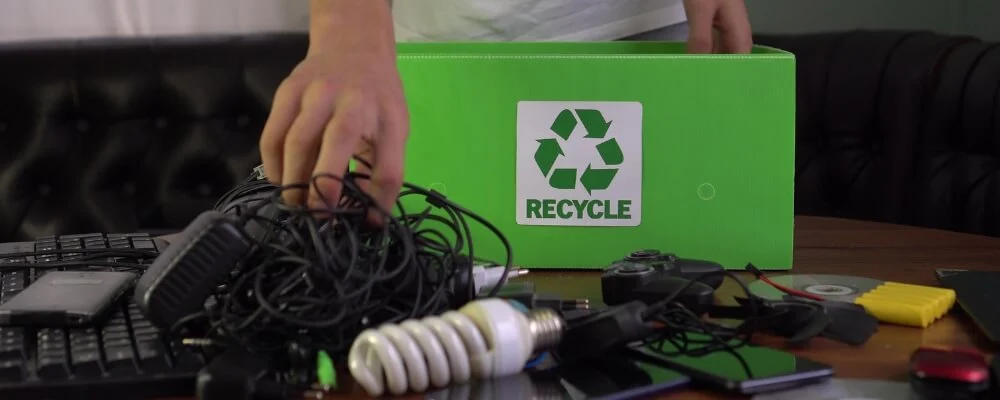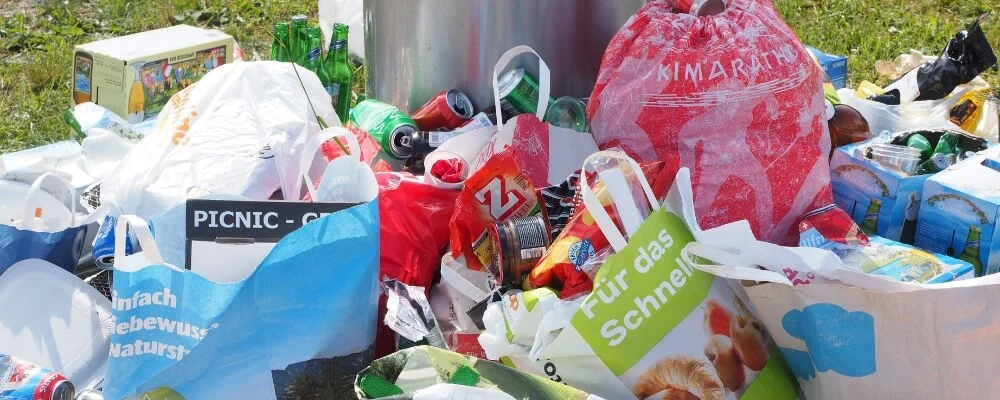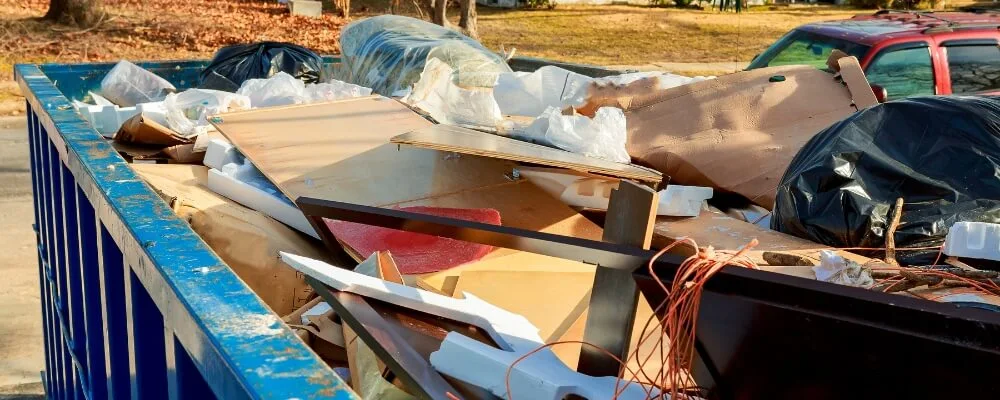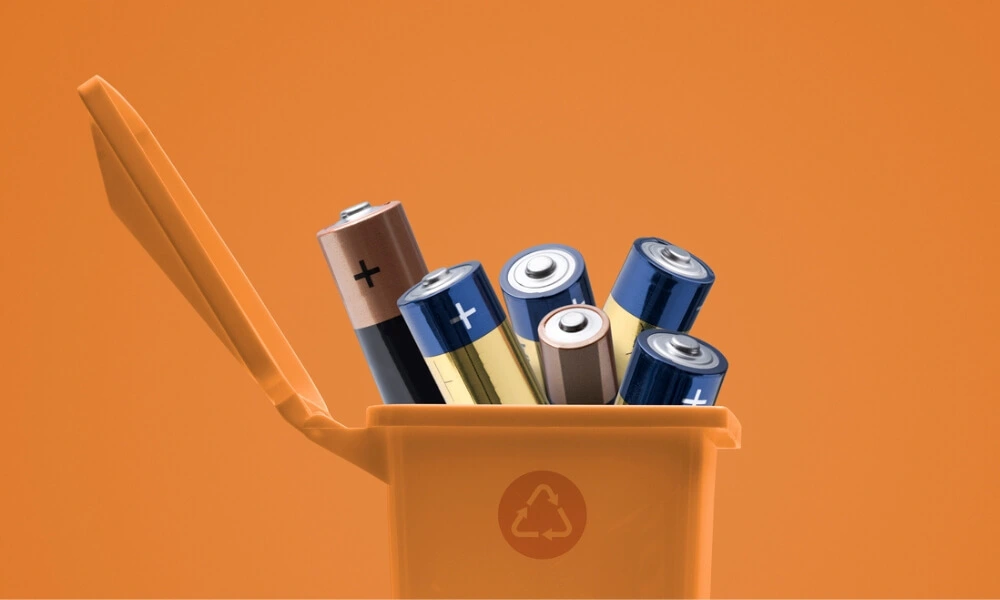In today’s rapidly industrializing world, generating hazardous waste is an inevitable byproduct. These wastes, laden with harmful chemicals and materials, pose significant environmental and health threats. However, thanks to advancements in waste management technology and practices, various methods are now available to safely dispose of and even repurpose such dangerous refuse.
This blog delve deep into 10 types of hazardous waste disposal methods, shedding light on their workings, benefits, and associated challenges. Whether you’re an industry professional, an environmental enthusiast, or just a curious reader, this comprehensive guide will give you essential knowledge about one of the most crucial aspects of modern waste management. Join us as we navigate the intricate maze of hazardous waste disposal.
What is Hazardous Waste Disposal?
Hazardous waste disposal refers to the systematic process of collecting, treating, and discarding waste materials that have the potential to pose significant risks to human health, safety, or the environment if not managed correctly. These waste materials contain properties that make them dangerous or potentially harmful to living organisms or the ecological balance. The inherent risks could be the waste being toxic, flammable, corrosive, reactive, or combined.

Importance Of Proper Hazardous Waste Disposal
Proper hazardous waste disposal is paramount for many reasons, including public health, environmental conservation, economic considerations, and legal obligations. Here’s an elaboration on the importance of proper hazardous waste disposal:
- Protection of Public Health: Many hazardous wastes contain chemicals that are toxic, corrosive, flammable, or reactive. Improper disposal can lead to direct exposure or ingestion by humans. For instance, toxins can seep into groundwater, which may become a drinking water source. Over time, consistent exposure to these contaminants can lead to various health issues, from minor illnesses to chronic diseases and genetic mutations.
- Environmental Conservation: The environment is a delicate balance of ecosystems. Improper disposal of hazardous waste can severely disturb this balance. Land, water, and air can all be contaminated. Animals can ingest the toxins directly or through the food chain. This affects the wildlife and the humans who consume these animals. Moreover, many hazardous wastes don’t degrade easily, meaning they remain in the environment for a long time, continuing to pose threats.
- Economic Implications: The cost of cleaning up after irresponsible disposal of hazardous waste is immense. Contaminated sites, once identified, need significant resources for remediation. This process can be lengthy and expensive. Additionally, a polluted environment can negatively impact local economies, especially those dependent on agriculture, fishing, or tourism.
- Legal and Ethical Responsibilities: Most countries have stringent hazardous waste disposal regulations. Failing to adhere to these regulations can result in heavy penalties, legal actions, or business shutdowns. Beyond legal implications, businesses and individuals have an ethical responsibility to ensure their actions don’t harm others or the environment.
- Resource Management and Sustainability: Some hazardous wastes can be treated and recycled. Proper disposal ensures that these materials are not wasted but returned to the production cycle. This reduces the need for virgin resources and supports a more circular economy.
- Preventing Catastrophic Events: Improper storage or disposal of certain hazardous wastes can result in explosive or highly reactive situations. Chemical reactions from mixed wastes or the ignition of flammable wastes can lead to fires, explosions, and the release of toxic fumes, endangering communities and causing significant property damage.
- Preservation of Biodiversity: Contaminated habitats can lead to the decline or extinction of certain species, impacting biodiversity. Some toxins can cause reproductive failures or fatal illnesses in animals. As these species decline, it can have cascading effects on the food chain and the broader ecosystem.
- Upholding Reputation: Proper waste disposal practices are not just about compliance for businesses. In an age of information and environmental consciousness, a company’s reputation is closely linked to its environmental stewardship. Irresponsible practices can lead to public relations disasters, loss of consumer trust, and eventual financial losses.
Proper hazardous waste disposal is not just an environmental concern but a holistic one, encompassing health, economic, ethical, and societal facets. As the ramifications of improper disposal become more evident, it’s clear that responsible practices are not just preferable but essential for the well-being of the planet and its inhabitants.

Types Of Hazardous Waste Disposal Methods
Hazardous waste disposal methods are essential to protect the environment and public health and maintain ecological balance. Various methods are employed based on the type of waste and its potential impact. Here are 10 different types of hazardous waste disposal methods:
1. Landfills
Landfills specifically designed for hazardous waste offer a controlled environment to dispose of solid hazardous waste materials. These landfills are distinct from regular municipal landfills due to the nature of the waste they handle. To prevent the waste from contaminating the soil and groundwater, they are constructed with impermeable liners, typically made of thick plastic or a combination of clay and synthetic materials.
Over time, as waste breaks down, it may produce liquid runoff known as leachate. Specialized leachate collection systems are integrated into the landfill design to collect this runoff. Once collected, the leachate is treated to remove harmful substances before being released or further processed.
2. Incineration
Incineration serves as a robust method to not only minimize the volume of waste but also to neutralize many hazardous compounds. During incineration, waste is burned at extremely high temperatures, turning most solids into ash, water vapor, and a mixture of gases. This process is highly efficient at breaking down many hazardous compounds.
However, the combustion process can also produce harmful emissions. Modern incinerators are equipped with advanced air pollution control devices to mitigate this. These systems capture particulates, neutralize acidic gases, and remove other pollutants, ensuring that emissions are within environmentally safe limits.
3. Chemical Stabilization
Chemical stabilization is a technique where specific chemicals are added to hazardous waste to alter its properties, making it safer for disposal. The main goal is to reduce waste’s solubility, reactivity, or toxicity. Doing so diminishes the waste’s potential to harm the environment or human health. Once stabilized, the waste can be disposed of in landfills without posing as significant a risk as originally. The type and amount of chemicals used for stabilization depend on the characteristics of the waste.
4. Biological Treatment
Nature offers its own tools for waste treatment in the form of microorganisms. Some bacteria, fungi, and other microbes have the remarkable ability to break down or detoxify certain hazardous compounds found in waste.
In biological treatment processes, hazardous waste is introduced to these beneficial microorganisms. They transform or degrade the harmful substances into less or non-toxic forms as they consume the waste. While this method is promising, its effectiveness is contingent on the type of waste and the specific contaminants present.
5. Deep-well Injection
Deep-well injection offers a disposal solution for liquid hazardous wastes. This method pumps the waste into porous rock formations deep below the Earth’s surface, often thousands of feet down. These geological formations are carefully selected to ensure they are isolated from drinking water sources.
Once injected, the waste is trapped, with layers of impermeable rock and clay acting as natural barriers. The depth and isolation of the injection zone ensure that the waste has minimal chances of contaminating drinking water sources or the surface environment. Proper site selection and monitoring are crucial for this method’s effectiveness and safety.

6. Physical Treatment
The physical treatment of hazardous waste employs basic physical processes to segregate or concentrate hazardous constituents. One common method is evaporation, which converts liquid waste to vapor, leaving behind concentrated residues. Sedimentation allows particles in a liquid to settle at the bottom, facilitating the removal of clear liquid from the top.
Filtration acts as a sieve to separate solids from liquids. A practical example can be found in treating sludges rich in heavy metals. By dewatering these sludges, the solid residues are concentrated and can be handled separately, while the extracted water undergoes further treatment to remove any dissolved contaminants.
7. Thermal Desorption
Thermal desorption is a sophisticated method to detach contaminants from soils, sludges, and certain solid wastes. By subjecting the waste to elevated temperatures, contaminants with lower boiling points are made to vaporize.
Once in vapor form, these contaminants are collected and subjected to treatment. They might be condensed to form concentrated liquid waste or undergo further neutralizing or destroying processes. The primary advantage of this method is its ability to recover certain contaminants for potential reuse or safer disposal.
8. Encapsulation
Encapsulation is akin to placing waste in a protective cocoon. It is effectively isolated from the broader environment by enclosing hazardous waste within stable materials like cement, polymers, or plastic. The encapsulated waste is thus prevented from reacting with external agents, including water or air, which might trigger the release of contaminants. This method is particularly useful for persistent wastes that might pose long-term risks, ensuring they remain isolated and neutralized for extended periods.
9. Recycling
Recycling is a cornerstone of sustainable waste management. When it comes to hazardous waste, recycling becomes even more pivotal. Certain hazardous wastes, especially solvents, can be purified and reclaimed for reuse.
Recycling retains the material’s original properties, allowing them to re-enter the production cycle. This diminishes the total volume of waste requiring disposal and conserves valuable resources, fostering a more circular economy.
10. Plasma Arc Recycling
Plasma arc recycling can be visualized as a futuristic method of waste treatment. Here, an electric current is passed through a gas, generating plasma – a superheated, electrically charged state of matter. This plasma, with temperatures rivaling the sun, is then used to treat hazardous waste. At such immense temperatures, the complex molecular structures of hazardous waste are broken down into their fundamental elements.
The result is a significant reduction in volume, with the residues often taking the form of an inert slag. This slag can be further processed or disposed of safely. The method’s high-energy efficiency and ability to handle a range of waste types make it a promising solution for the future of waste management.

Hazards Associated With During Disposing of Hazardous Waste
Disposing of hazardous waste involves several inherent risks. If not conducted with utmost care and adherence to regulations, the process can present hazards to the environment and the people involved. Here are some of the primary hazards associated with disposing of hazardous waste:
- Chemical Exposure: Personnel handling hazardous waste can be exposed to toxic chemicals, either through direct contact, inhalation, or accidental ingestion. This exposure can lead to immediate health effects or long-term illnesses.
- Explosions and Fires: Some hazardous wastes are flammable or reactive. They can ignite or explode if they come into contact with incompatible substances or are exposed to heat or certain conditions.
- Release of Toxic Fumes: Combustion or chemical reactions of certain wastes can release toxic gases or fumes. If these are inhaled, they can cause respiratory problems, intoxication, or other health complications.
- Environmental Contamination: Improper disposal can lead to contaminants seeping into the soil and eventually reaching groundwater, affecting aquatic and terrestrial ecosystems. This can harm plant and animal life and human communities relying on the affected resources.
- Biohazards: Some hazardous wastes, especially medical wastes, might contain pathogens. If these are not destroyed or contained effectively, they can cause diseases or infections.
- Physical Injuries: The handling and transportation of hazardous waste can expose workers to risks of physical injuries, from cuts and bruises to more severe injuries, especially if containers break or machinery malfunctions.
- Radioactive Contamination: Wastes containing radioactive materials can pose a radiation hazard if not properly shielded, stored, or disposed of.
- Thermal Burns: High-temperature disposal methods, like incineration or plasma arc treatment, can pose risks of burns or heat-related injuries.
- Pollution of Air and Water: Improper incineration can release pollutants into the air, while inadequate treatment before discharge can pollute water sources.
- Ecological Disruption: Contaminated habitats can alter the balance of ecosystems, affecting food chains and the environment’s overall health.
- Long-term Environmental Impact: Some hazardous wastes, like heavy metals or certain persistent organic pollutants, do not degrade easily. Their presence in the environment can lead to prolonged ecological and health issues.
Given these hazards, the importance of trained personnel, protective equipment, strict protocols, and continuous monitoring of hazardous waste disposal cannot be overstated. Properly managing these risks ensures the safety of the environment and those involved in the disposal process.
Conclusion
Navigating the complex world of hazardous waste management, we’ve explored 10 diverse disposal methods, each pivotal in ensuring that harmful substances are dealt with responsibly and safely. From traditional landfills designed with utmost precision to high-tech solutions like plasma arc recycling, it’s evident that our approach to waste management has evolved dramatically to prioritize both environmental and human safety.
Industries, policymakers, and individuals must stay informed and proactive as we continue to innovate and refine these processes. Proper disposal of hazardous waste isn’t just a regulatory necessity—it’s a moral and ecological imperative. Understanding and implementing these disposal methods will remain crucial in safeguarding our planet and its inhabitants as we stride into a future with even more technological advancements and environmental challenges.

